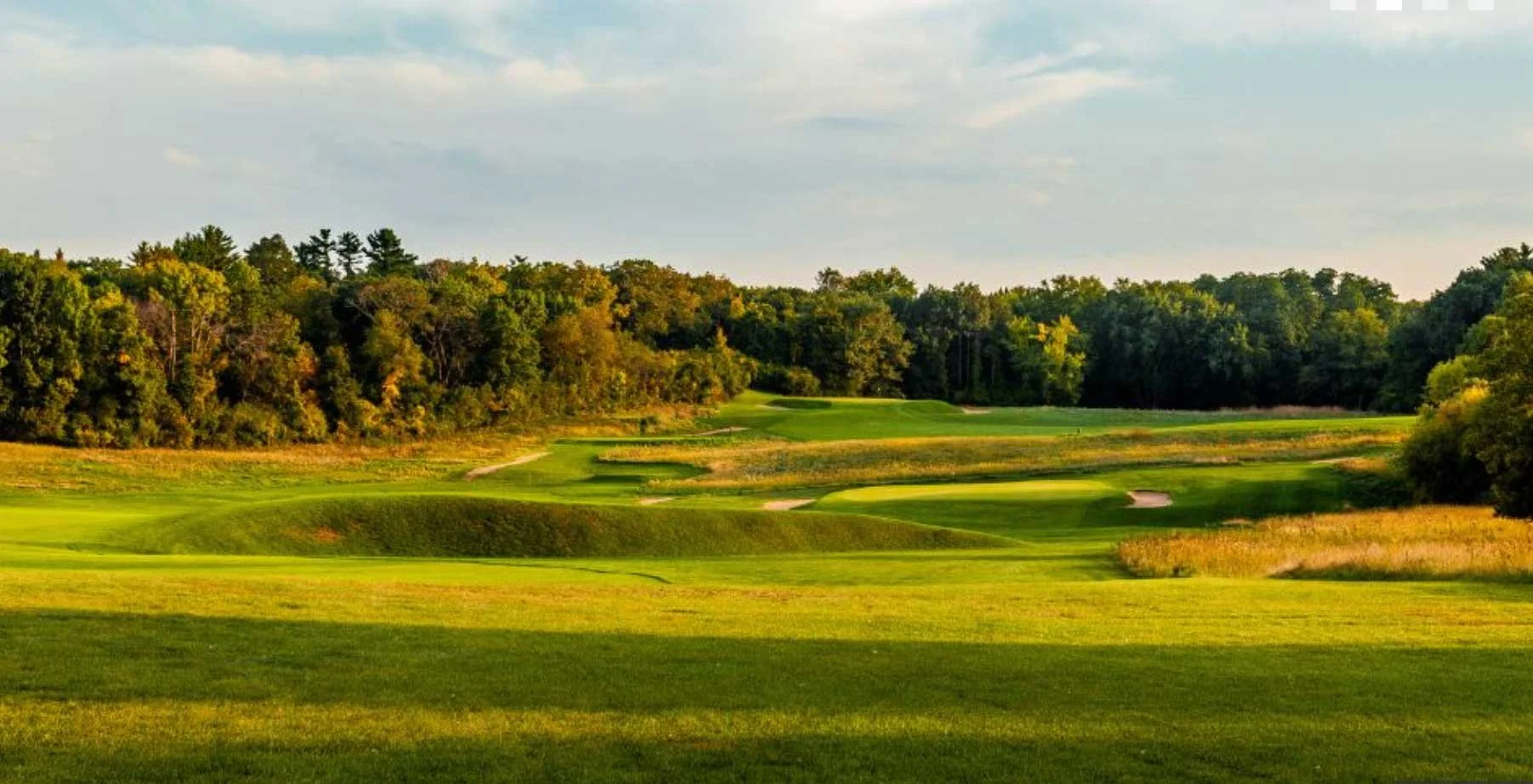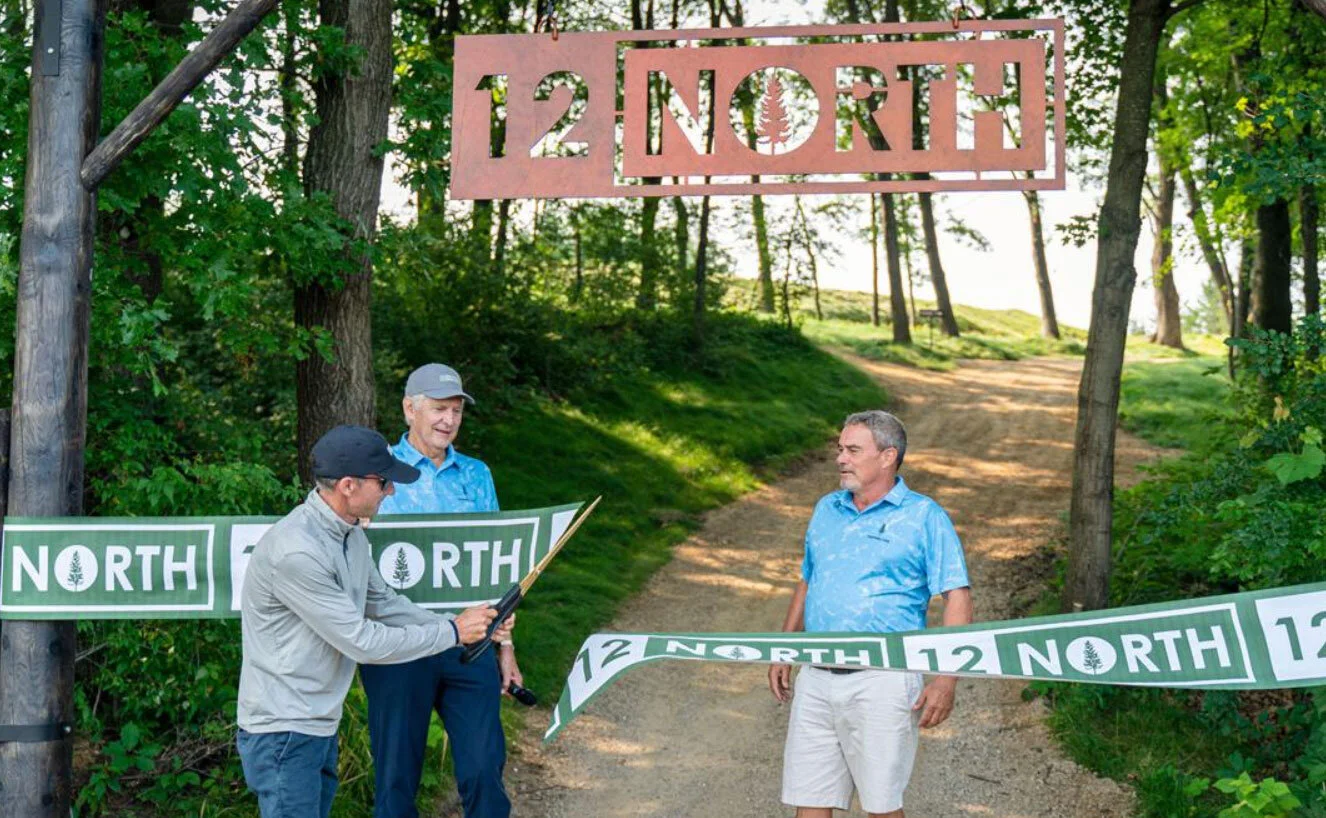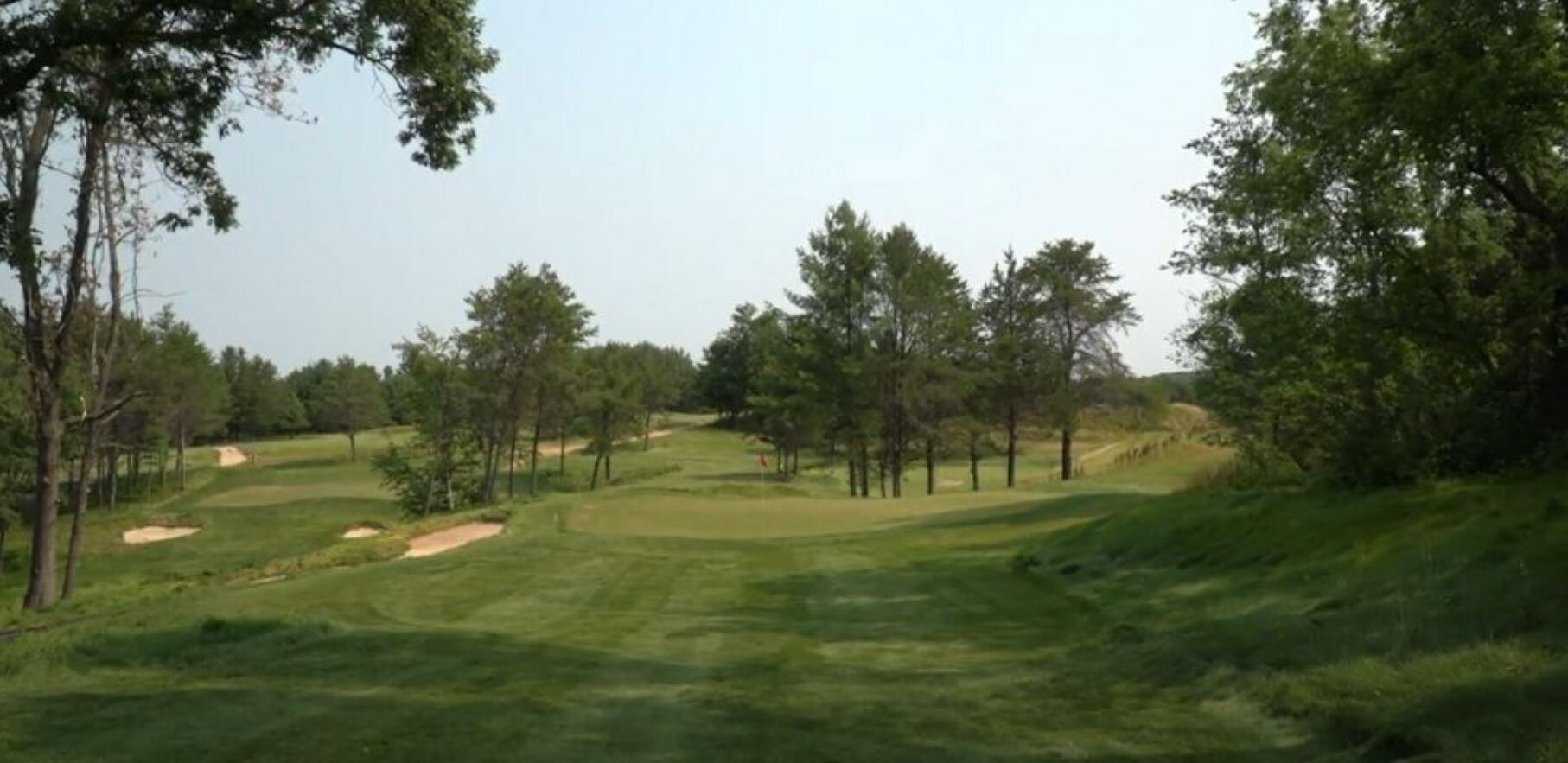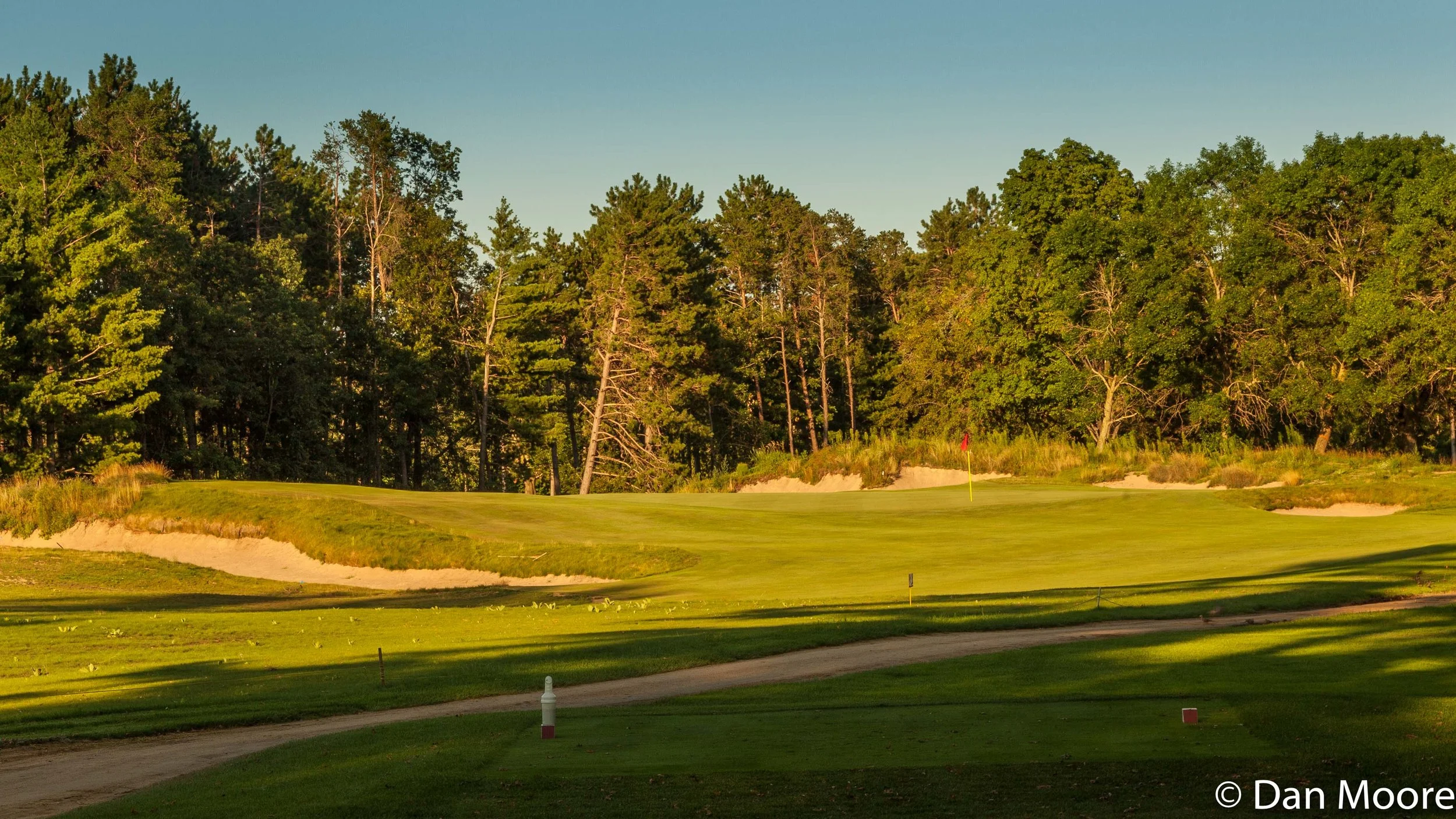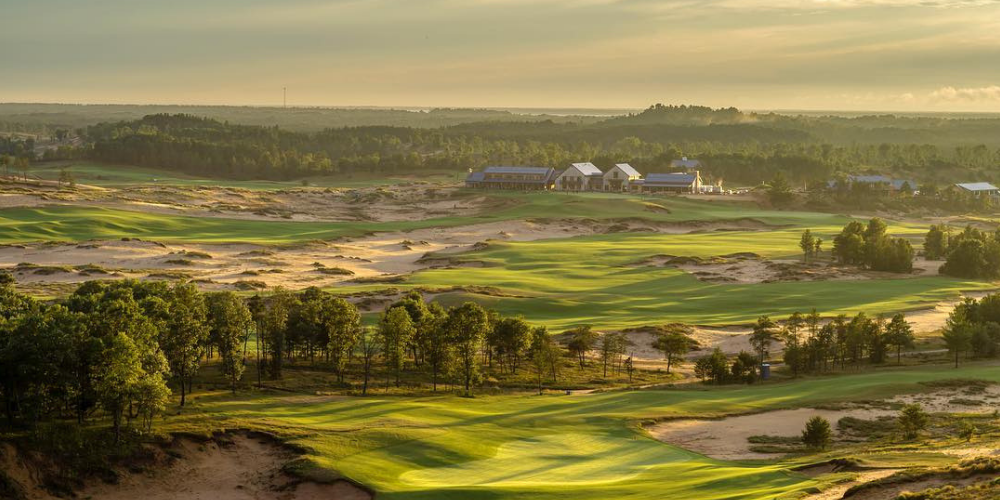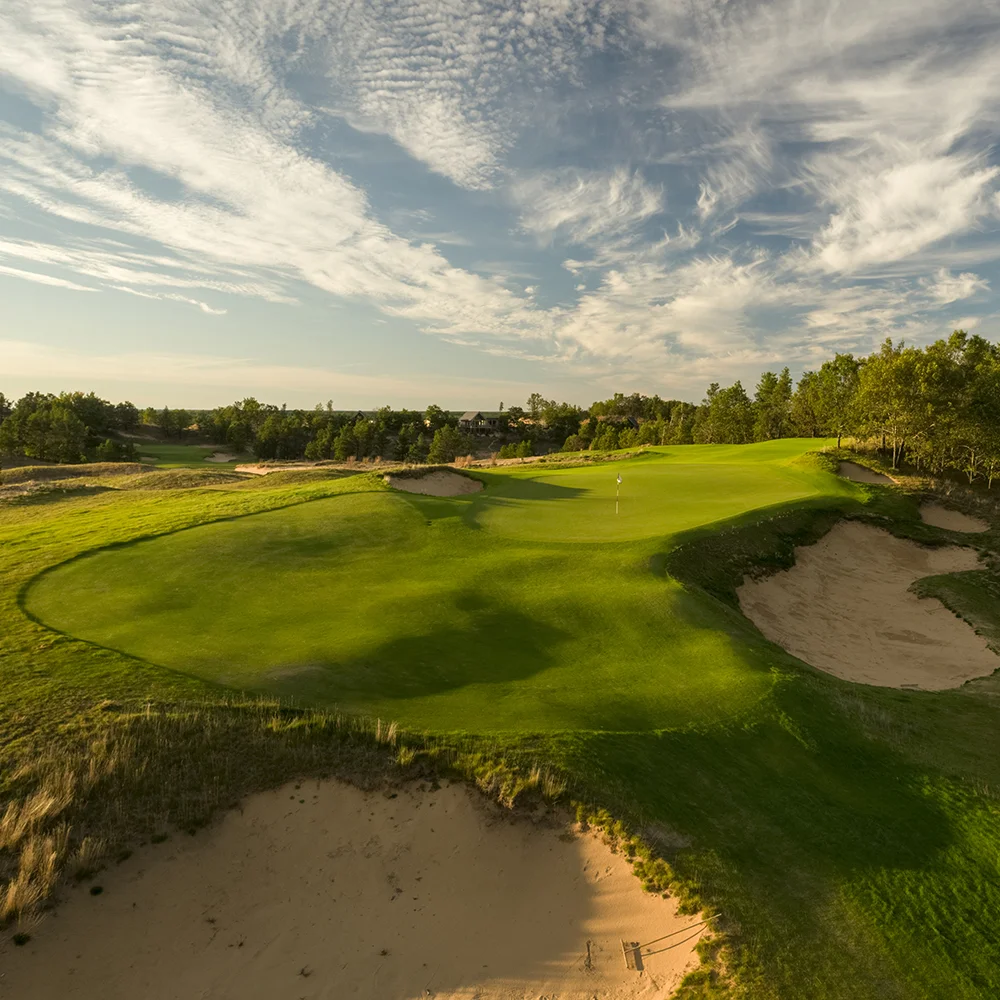In a match for the ages, D.J. and good friend Stephen Watson embarked on the top 10 public golf courses in Wisconsin in under 40 hours.
The top 100 walking golf courses in America: the other 75
11 of the Biggest Par-Three Drops in the U.S.
Craig Haltom restores original design intent to bunkers at Lawsonia Links
The Dance Floor at Geneva National Readies For Its Second Season
Already known to Wisconsin golf fans, at the recent 2023 Chicago Golf Show, Illinois golfers got a first hand look at a portion of what created all the excitement over last year’s opening of the 27-hole putting course at Geneva National Resort, called The Dance Floor.
The Biggest Putting Courses in the U.S.
As audacious as Sand Valley’s growth is, so are the plans for its putting course. It’s set to be around five acres, or well over 200,000 square feet. That’s over twice as big as any other putting course currently in use, including the game’s old-school original: the Himalayas course at St. Andrews in Scotland. For further context, the average green size on the PGA Tour is about 6,000 square feet, so this would be approximately 35 times bigger.
In fact, the home of golf was its inspiration.
It’s a 30,000-square-foot putting green, patterned on the Himalayas putting course at St. Andrews. It is believed to be the largest public-access putting green in the U.S. unaffiliated with a course.
Keiser’s Game-Changing Wisconsin Project: The Glen Golf Park
Keiser is the benefactor behind the transformation, and salvation, of a 9-hole municipal course in his hometown of Madison, Wis., that just might be a blueprint for a public golf facility focused on playability, ecology, and perhaps most importantly, community. The nearly 100-year-old Glenway Golf Course has given way to The Glen Golf Park, a muni modeled after the vision of the Old Course at St. Andrews in Scotland, with golf coexisting with other community activities.
How one of America’s coolest putting greens came to life in the most unlikely of places
The village of Three Oaks, Mich. (pop. 1,622), is a sleepy destination in the southwest corner of the state, two miles from the Indiana border. Its terrain is largely flat and fringed with cornfields.
But in the heart of Three Oaks, in the shadow of a renovated factory building, lies a rumpled plot of ground that could pass for a rugged patch of Scotland.
In fact, the home of golf was its inspiration.
It’s a 30,000-square-foot putting green, patterned on the Himalayas putting course at St. Andrews. It is believed to be the largest public-access putting green in the U.S. unaffiliated with a course.
As the Dells' newest amusement park, Andy North's 12North par-3 course at Trappers Turn entices golfers with a mix of fun and challenge
To play 12North, the new par-3 course at Trappers Turn Golf Club, you need only a wedge, a putter and a sense of humor. This place rocks. It also rolls, with green complexes featuring exaggerated mounds, sidewinding ridges, hole-in-one bowls and enough ups and downs to qualify as the Dells’ newest amusement park.
New 12-hole par-three course opens for preview play at Trappers Turn
The 'other' 18 at Lawsonia, the recently renovated Woodlands course, is a walk in the woods you shouldn't miss
The rediscovery in recent years of the Links Course at The Golf Courses of Lawsonia by architecture buffs and bloggers is reflected in its climb up the magazine ranking lists, and has pegged the 90-year-old Langford-Moreau design as a must-play.
Stevens Point Country Club reborn after Imprelis damage
“‘There are so many different ways it could have turned out,’ says Craig Haltom, president of golf management for the Oliphant Companies and an 11-year GCSAA member. ‘For me, it was a lesson in, if you’re able to make a reinvestment in a golf facility, it can pay off. I’m not a person who would just advocate change for the sake of change. But if you’re able to make a reinvestment ... I’ve seen people respond to it.’”
The remarkable makeover of The Club at Lac La Belle promises a brand new golf experience on a historic course
OCONOMOWOC – Perhaps you knew it as Lac La Belle Country Club, a once-prosperous private club that, like many private clubs of a certain vintage, struggled with a dated business model, took on too much debt – much of it for an expensive clubhouse renovation – and had no choice but to sell.
Maybe you played it in subsequent incarnations as Rolling Hills Country Club and La Belle Golf Club, which despite the good intentions of its owners struggled for market share in a region saturated with golf options ranging from high-end private clubs to affordable municipal facilities.
Hutton: Valparaiso graduate Craig Haltom hits it big in the golf course design business
Going for 3: Koepka chases the mysterious Willie Anderson
PEBBLE BEACH, Calif. — It’s hard to blame Brooks Koepka for not knowing much about the man whose record he’s chasing. For decades, pretty much everyone forgot about him.
His name is Willie Anderson. And though Anderson will never be confused with Jack Nicklaus or Tiger Woods, his accomplishment back in 1905 — winning his third consecutive U.S. Open — is something nobody has been able to match.
A Recipe for Success
When funds are tight, it becomes even more important that any windfall is not wasted, but rather gives as much bang for the buck as possible. And, even after a brief look at Stevens Point Country Club, it’s not hard to agree that they have done exactly that.
Designed originally by architect Larry Packard, Stevens Point, located in central Wisconsin, looked a lot like many other mid-century layouts - wall to wall green, from grass and trees. But, like so much of this part of Wisconsin, Stevens Point is built on sand, and that proved to be its saving grace when it lost a large portion of its tree stock because of the use of the DuPont herbicide Imprelis.
Stevens Point is now managed by Oliphant Golf, and that fact meant that Oliphant partner Craig Haltom, a young man trying to develop his reputation as a golf architect, saw a lot of the course. Haltom, who found the property later developed by Mike Keiser as Sand Valley (the Craig’s Porch snack hut at Sand Valley is named for him.) The settlement of the Imprelis legal case meant Stevens Point was in line for a substantial windfall: Haltom proposed to the members spending some of the money on a radical project involving taking out further trees, completely rebunkering the course and turning a traditional parkland course into something far rougher around the edges, with exposed sand and large bunkers dominating the view.
Golf Inc. 2019 Development of the Year: Mammoth Dunes
When you Wisconsin, think golf. Indeed, think great golf. Already home to acclaimed courses such as Whistling Straits and Erin Hills, Wisconsin is now home to Mammoth Dunes, Golf Inc. magazein’s 2019 Development of the Year first-place winner.
Mammoth Dunes is the latest addition to Sand Valley Golf Resort, the Mike Keiser development in central Wisconsin built on isolated, dune-peppered land carved out by glaciers.
Golf Digest's Best New Course of 2017: Sand Valley
Sand Valley was not Keiser's dream. It was that of Craig Haltom, at one time a golf-course shaper (now a partner with his old boss, Mike Oliphant, in a firm called Oliphant-Haltom Golf). Haltom wanted to design and build his own course, and he scoured Wisconsin searching for the perfect site. More than a decade ago, he discovered an unharvested pine plantation southeast of tiny Nekoosa and 108 miles north of Madison: 1,500 acres of red pines, planted in rows, running up and down enormous hills that reached up to 80 feet high. With pure sand beneath, deposited eons ago by a glacial lake, it was ideal for golf—nothing supports the game better than a deep strata of sand offering perfect drainage and firm turf. Haltom had not nearly enough money to purchase the land, so he sought an investor, eventually Keiser among the prospects. Keiser first saw the property in 2013.
Central Wisconsin becoming hot golf destination
Soaring sand dunes flank the winding entrance to Sand Valley and then the golf course appears – a moonscape of sand blowouts, jagged ridges and green fairways snaking to the horizon.
Are you in Montana? Idaho? Abu Dhabi?
None of the above. You’re in the sand barrens of central Wisconsin, near the Town of Rome, which is not to be confused with its namesake in Italy. You’re about as far removed from civilization as a golfer can get. And as close to heaven.





